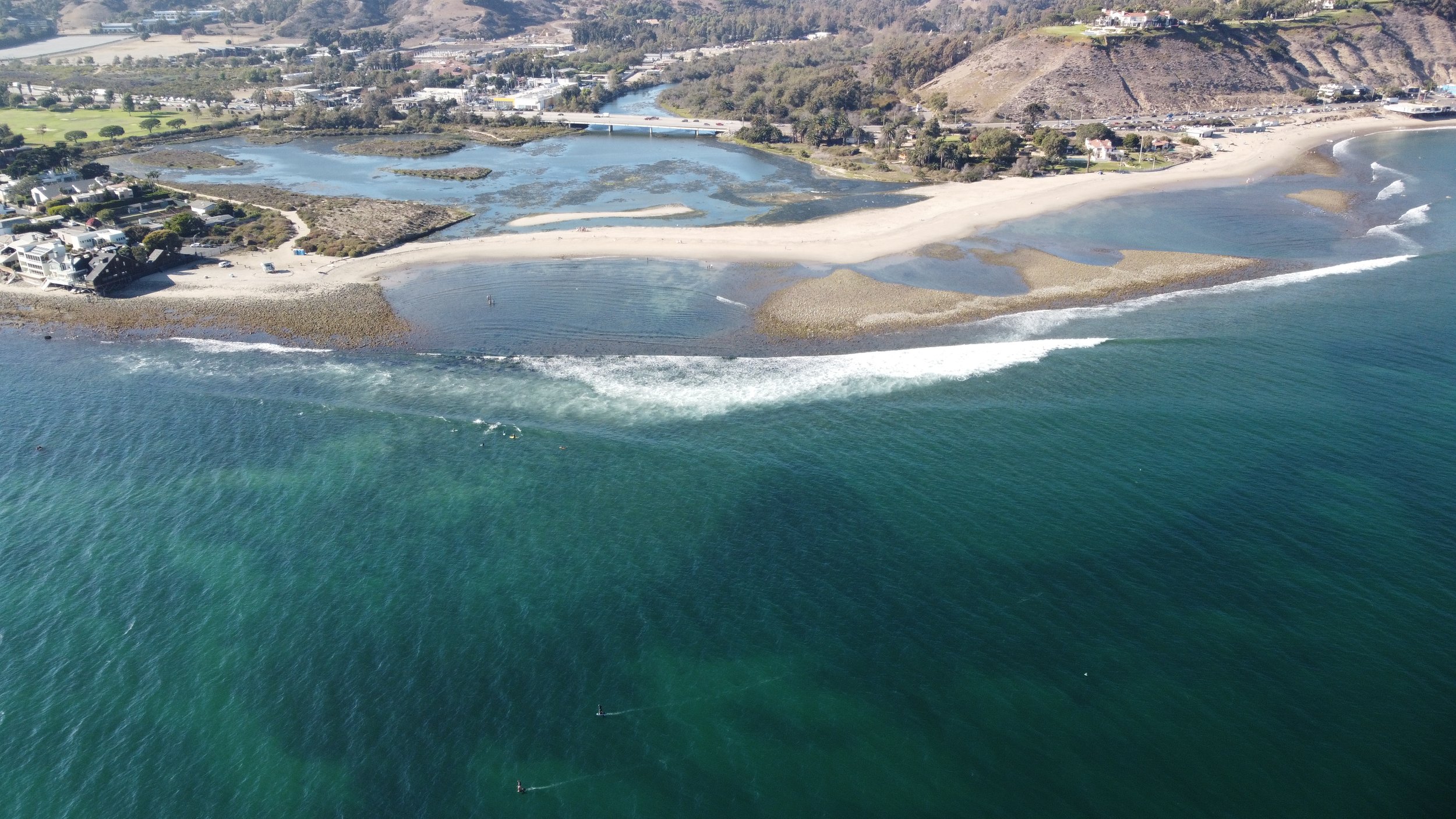
A California State Parks Summit-to-Seabed Ecological Restoration Project in Los Angeles County.
Malibu Lagoon and Creek Photo by Bernard Yin
By restoring natural processes and essential habitat connectivity, the Malibu Creek Ecosystem Restoration Project (MCERP) will protect our remarkable biodiversity, support recovery of endangered Southern Steelhead, and serve to nourish and protect Malibu’s world-class coastline and beaches— providing significant benefits for our natural and human communities.
For a century the 100-foot-tall Rindge Dam has severed the Malibu Creek Watershed from its natural connection to Malibu Lagoon and onward to Santa Monica Bay and the Pacific Ocean. This abandoned dam, which provides no water storage or flood control benefits, stands as an insurmountable barrier to aquatic species, including the endangered Southern Steelhead. It also prevents natural sediment flows from the Santa Monica Mountains downstream to Malibu’s coast, breaking the natural cycle of beach replenishment and further exacerbating beach erosion. California Department of Parks and Recreation (State Parks) is leading the effort to deconstruct the dam and rebuild the river, correcting a century of damage and restoring resiliency to the Malibu Creek Watershed.
Re-nourishing and Protecting Malibu’s World-Class Beaches
The impoundment behind abandoned Rindge Dam is full of sediment with no water storage capacity and poses a recreational hazard to the public. Removing Rindge Dam will return natural sediment flows from the Santa Monica Mountains to the Malibu coast, restoring the natural processes that nourish, rebuild, and protect our beaches. The MCERP provides a nature-based solution to the environmental challenge of redistributing a century of sediment that has been trapped behind Rindge Dam. All suitable sediment will be used to provide an immediate buffer against beach erosion and habitat loss along Malibu’s coast.
Photo: Bernard Yin
Welcoming Endangered Species Back to their Ancestral Waters.
The Malibu Creek watershed is a high-priority Southern steelhead recovery river with federally designated critical habitat. The Malibu Creek Ecosystem Restoration Project involves removing Rindge Dam and removing/mitigating eight upstream passage barriers to reconnect 18 miles of aquatic habitat in Malibu Creek watershed and restore critical landscape-scale ecosystem processes. This is a rare opportunity to reclaim summit-to-seabed ecological restoration in an extensive watershed located in urban Southern California. MCERP aligns directly with California’s 30x30 efforts to protect or restore 30 percent of California’s Lands and Waters by 2030.
Malibu Creek. Photo by Bernard Yin
Connecting People with Nature
By restoring natural processes to these public lands, the MCERP will provide visitors to Malibu Creek State Park the recreational benefits of a newly restored watershed. There are 15 miles of streamside trails through oak and sycamore woodlands on chaparral-covered slopes. Following the trails along Malibu Creek, visitors are treated to spectacular vistas, including volcanic rock gorges, scenic pools, and breathtaking views of the Las Virgenes Valley and Malibu Canyon. Culturally, this area was the center of Chumash Native American life for centuries.
Photo: Bernard Yin







